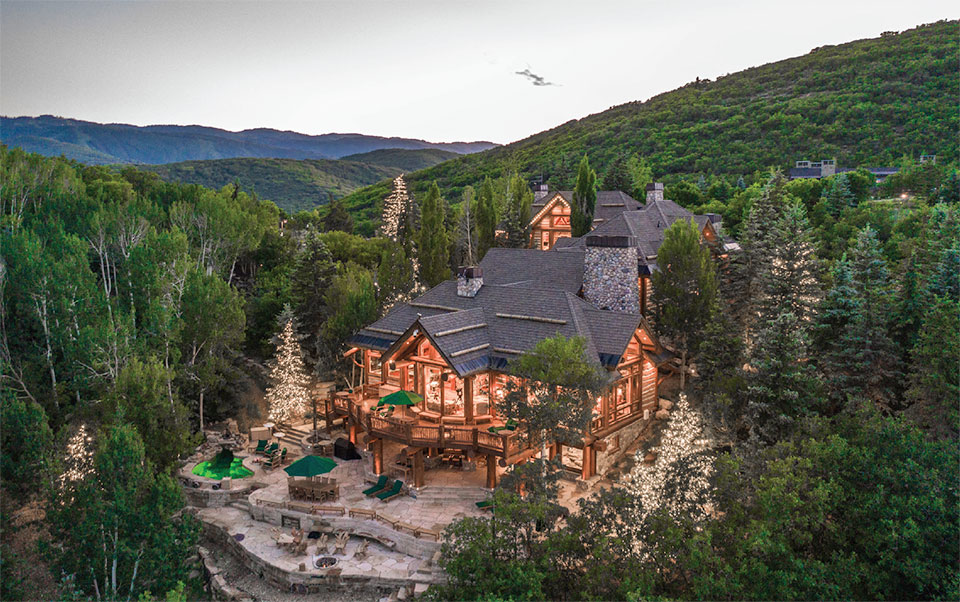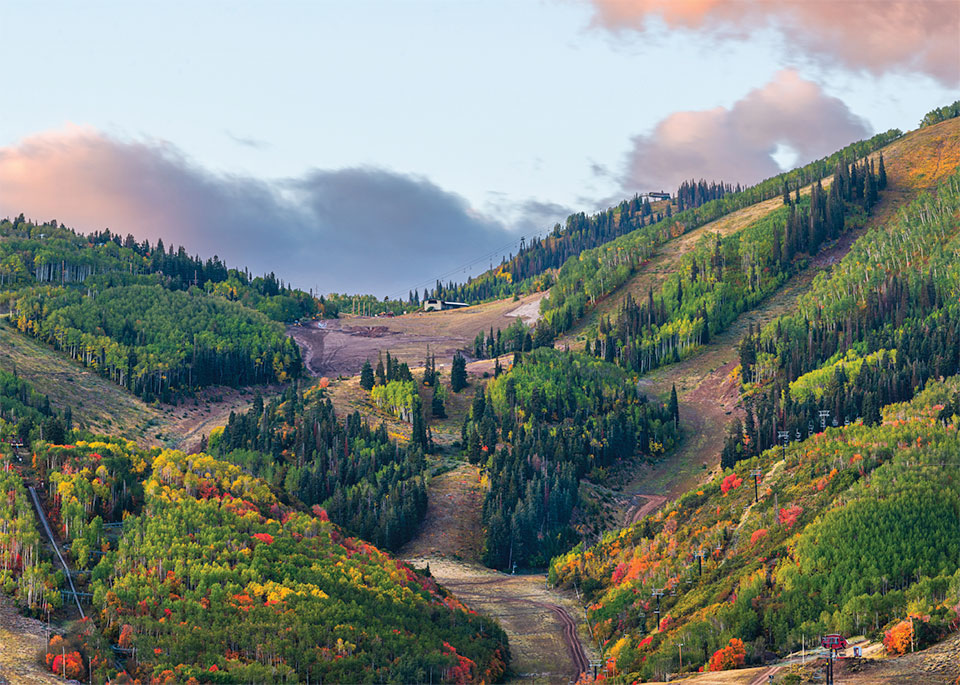Real Estate Trends
A Roundtable Disucssion with Expert Realtors
moderated by SABINA DANA PLASSE, portrait photography by ADAM J. FINKLE
Park City, Utah, is a vibrant real estate market with unique properties for those who covet mountain town living. In this roundtable discussion, realtors Marcus Wood of Engel & Völkers, Ryan McLaughlin of Berkshire Hathaway HomeServices Utah Properties, Mark Rodeheaver of Park City Real Estate Co., and Ben Fisher of The Fisher Group at Summit Sotheby’s International Realty discuss the most current state of the Park City real estate market. With decades of experience, these local real estate agents provide up-to-date information and insight into what is happening and how to navigate Park City as it continues to maintain its status as one of the most desirable places to own a home in the West.
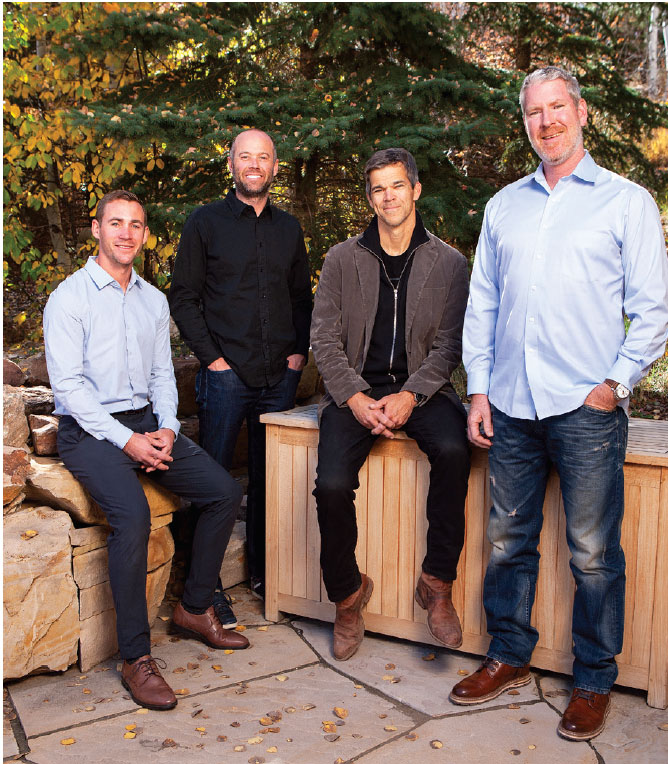
whj : Park City’s real estate market has grown tremendously since 2020. What are some of the factors that have contributed to this current growth?
whj : Is the Salt Lake City airport expansion contributing to the growth?
Mark: Certainly, convenience to the mountains is a contributing factor. What’s interesting is that folks who fly privately can choose to fly almost anywhere to ski. They choose Park City because they want to be in Utah. It might be the same time to fly to Sun Valley or Big Sky, but they are choosing Deer Valley and Park City over other resorts because they want to be in Utah. They want to spend their time in our mountains, have dinner on Main Street, and call Park City their second home.
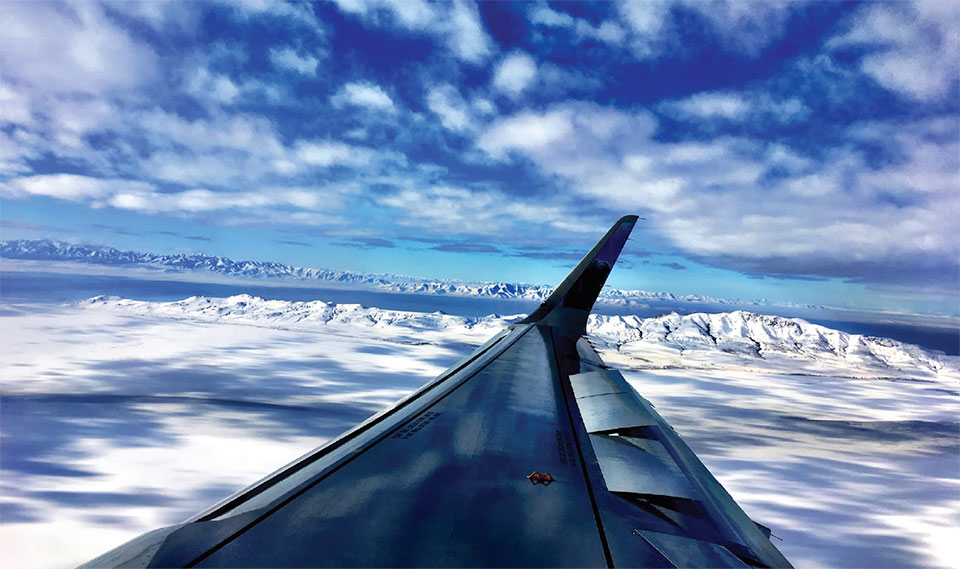
Marcus Wood: People have found that smaller or private airports have become congested and challenging to fly into. They like the simplicity of flying into Salt Lake City International Airport. The drive to Park City is a straight shot with no stoplights or stop signs up Parley’s Canyon, which is always plowed and kept very clean for travelers. Travelers from surrounding states can be here in an hour and a half and skiing in the morning. It’s about accessibility. We certainly have the most accessible ski town and resorts from any international airport in the country. Of course, private is a different story, but most private travelers enjoy landing in Salt Lake City.
Ryan McLaughlin: Even for those who are not flying private, I think many people consider how their friends are going to get here, where they’re located, and how easy it is for them to fly to get here. The new Salt Lake City International Airport has more non-stop flights from large cities than ever. If you are a family with college-age kids, Park City is very much a place, the ‘it’ place. Vacationers want to come to Park City. Moms and dads want the kids to come. You want it to be easy for other people to get here, too, and it honestly couldn’t be easier.
Ben Fisher: The ease of access is probably one of the biggest draws we get, but there is the Vail effect, and now you have Alterra, so you’ve got two big ski passes competing for a great deal of the skiing population. This has drawn many more people to Park City, compounded with COVID and the ease of access we have. This has brought a lot more people than we used to have into the market, driving many of the sales these last few years.
Marcus: COVID caused people to shift around. People who had access to planes and flexibility with work drove people to Park City. Park City may not have been on their radar. However, once they explored other ski resorts, they found value and appeal in the lifestyle in Park City. They looked at the pricing compared to Jackson, Vail, Sun Valley, and all these other resorts and realized Park City is a bargain, plus there’s so much to do. There’s an enormous amount of skiing, and people always underestimate the fact that you have surrounding resources within an hour’s drive in cities like Salt Lake, which is not necessarily the case in other places. In addition, we have over 100 restaurants and 450-plus miles of trails for hiking and biking.
whj : Can you all describe where most of the growth occurs? What are some of the new developments?
Ryan: At the end of the day, Park City is not a huge town. So where do you go once the town is built out? You start with the surrounding cities. The Jordanelle area is an excellent example of growth and density expansion. Amenity-rich communities like Promontory and Tuhaye that have undeveloped lots have been very attractive to prospective buyers in the last 24 months. As the town has been built out, those areas don’t seem as far away.
Ben: The golf communities, for one, have pushed many people out in that direction. It’s no longer necessary to buy in town anymore for certain things. In the Jordanelle and the Heber Valley, both overflow markets here, people are getting a little bit more affordability there. But it’s all just stretched to the outskirts of Park City for people to be close and still have access to everything you know this ski town offers, whether it’s for skiing, hiking, biking, etc.
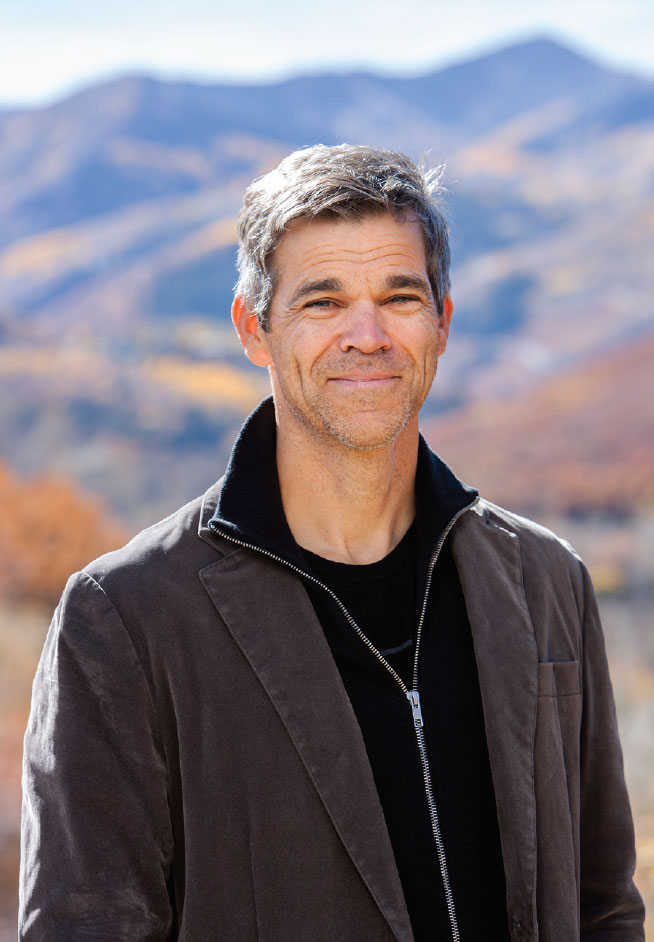
“What’s interesting is that folks who fly privately can choose to fly almost anywhere to ski. They chose Park City because they want to be in Utah.”
-Mark Rodeheaver, Park City Real Estate Co.
Mark: There are several areas of new growth, including ski resort developments, which include the Mayflower Mountain resort and neighborhood developments at Promontory. Although new ski developments are limited, Sommet Blanc, located next to Montage Deer Valley, is one where I am representing clients. They are high-end luxury ski condominiums located on the slopes in upper Empire Pass. I also have a few listings at Pendry Residences in the Canyons Village, which opened in 2021. In terms of golf course communities, Promontory has been quite successful with its high-end neighborhood at Pinnacle. There are also numerous developments around the east side of Park City along the Jordanelle reservoir and Mayflower Mountain, though they are in Wasatch and not Summit County.
Marcus: I think that’s also the talking point about Park City. It is mainly built out. We discuss other ski towns being built or not having the extra space to build. We are no different. The Park City limits are mostly all built out, with a few remaining development entitlements in some select areas. The Canyons Village has some high density left there; otherwise, it is all getting pushed out to the east side and the Jordanelle. The latest and greatest that everyone is talking about is the new ski resort here.
whj : What about Mayflower, the new ski resort?
Marcus: There’s a great deal of interest in who will operate it. We’re all waiting to find out if it could be Deer Valley. There’s a great deal happening there with products and things selling. There’s a little bit of hype around it.
whj : Is this new ski resort similar to the Yellowstone Club?
Mark: Mayflower Mountain will be a public ski resort on the east side of Deer Valley, whereas the Yellowstone Club is entirely private. They plan to open for skiing in late 2024 with 4,300 skiable acres, 15 lifts, and 50 miles of hiking and biking trails. The resort base will include branded hotels, ice skating rinks, a ski beach, a skate park, and shopping and dining options.
Ryan: We will have to wait and see how the consumer will want to use the mountain if they stay on that side or make their way over to Empire Pass. If they strategically stay on Empire Pass or that side of the resort, it’s because that’s where they want to ski.
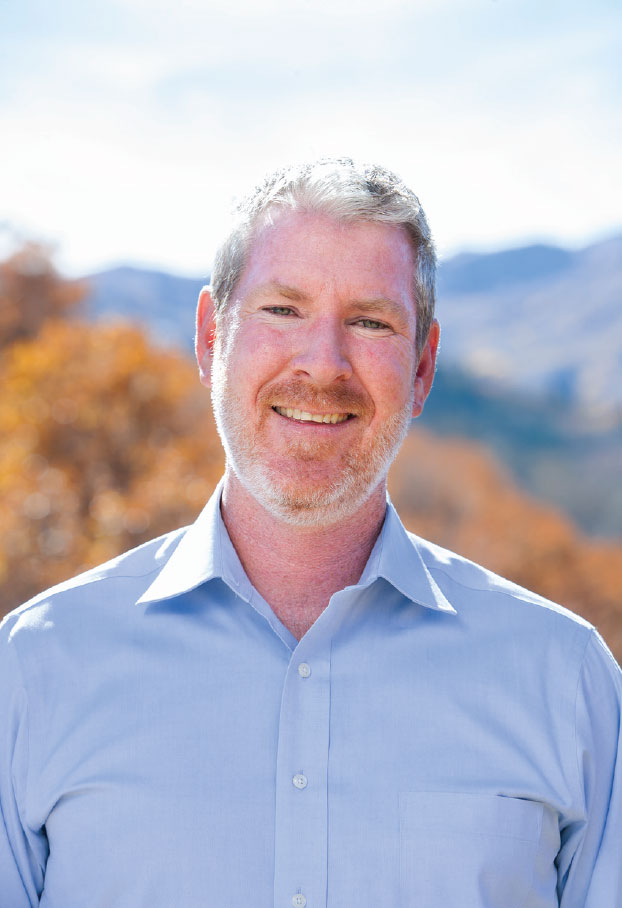
“Park City has really never been a ‘have to be here’ place, but more of a want, and often that want exceeds the need, propelling
the market forward.”
-Ryan McLaughlin, Berkshire Hathaway Home Services Utah Properties
Marcus: I think it’s sustainable. I think there are enough skiers, especially during the peaks in the season when Deer Valley is constantly selling out, like during those busy holidays. Now, they will have that extra room to shift people around. All we heard about for the last two years was how awful the lift lines were.
Ben: There’s a different access point for more skiers to come from, so they don’t have to go into Park City to get to Deer Valley. I think it will be nice for people coming from Wasatch County looking to ski. Coming into the back side of Park City has become a problem over the last few years. Now, there’s another hub for people to use and an area with hotels where visitors don’t have to come into Park City proper. Deer Crest is somewhat limited in its capacity, and I think opening Mayflower will help alleviate those choke points a little bit more, so that’s a good aspect. It could be positive, regarding the volume going to that side of the mountain. I think it’s suitable for Park City, in general, to get rid of some of that traffic coming through.
Mark: Mayflower will offer certain real estate opportunities similar to Deer Valley and the base of the Canyons Village ski area, a collection of ski-in-and-out lots and stacked flat condominiums. For many locals living on the east side and in Heber, the appeal will be quick access to another mountain. Hopefully, this will alleviate some of the skier traffic heading to Deer Valley and Park City. However, the village is still years away from completion.
Marcus: This is the first major ski resort, other than a few tiny ones, that has hit Utah since Deer Valley opened in 1981. The two youngest resorts are right here.

whj : Have the interest rate hikes affected the Park City real estate market in 2022 for buyers and sellers?
Ryan: Yes, the increases have certainly affected our market. It puts downward pressure on pricing, decreasing our buyer’s power. It has influenced our market just like the crash in 2008. However, people who want to be here will still make a move. Park City has never been a “have to be here” place, but more of a want, and often that want exceeds the need, propelling the market forward.
Marcus: There’s still a lot more going on for where we are now. This could change in two, three, or six months. People are nervous about the unknown. A lot is going on with inflation hence the interest rates. People like a little bit more certainty. They tend to pause until they can get some good news, and interest rates are one of those factors. I also believe that on a macro level, many people have so much equity sitting in their homes, especially over these last few years, that I think they’re at a standstill. They’re not trading around as much. It doesn’t make sense to cash out of a home they have significant equity in and trade. We see a great deal of trading internally in Park City, so they’re trading up, sideways, or to a different community. I think people are just sitting still for a moment.
Mark: Despite prevailing macroeconomic conditions, premium Deer Valley and Park City real estate remain a portfolio must-have. The market has slightly leveled the playing field between buyers and sellers. For example, the luxury segment of the real estate market historically favors all-cash buyers and is driven less by interest rates. If there is scarcity in a property type and it is priced correctly, a home can still sell quickly for the asking price. Inventory remains low. And a year ago, if a property was priced on the button or aggressively, I received requests to view it immediately. Today, inquiries come more slowly, and buyers expect more time. Moving into the ski season, and with a lack of available properties to purchase on or near the mountains, it will be interesting to see how quickly properties sell, especially with luxury branded residences.
Ben: The pace has slowed considerably from what we have all been used to in the last few years. It does seem to be leveling out. At least, it feels that way in many areas. We’re also going to have specific segments of the market that continue to have plenty of cash to make the moves they want. Specific market segments will level out but still move quickly, and there are other areas of the market, such as people coming in and wanting a nightly rental property for cash flow. Those segments are getting squeezed because the numbers don’t look good anymore if those buyers are obtaining financing. Certain segments of the markets will struggle, and certain areas will do fine because there are still plenty of cash buyers willing to pull the trigger for the right property when it hits the market.
whj : Will building projects be affected?
Marcus: A lot of the big building projects will keep pushing through. There are no worries about these small dips. There’s a lot of money backing them.
Mark: It ultimately depends on the location, product, and price points. There is still a strong demand for new real estate in Deer Valley and Park City. Additionally, there is a lack of inventory. Compared to the primary home market, the ski market tracks a bit differently. Ski real estate is traditionally not driven by loans, though some buyers in the past would put debt on a property since they could get rates so low. It only made sense. Today, those buyers are paying in cash. In the primary home market, many purchases are contingent on financing. It depends on price points. Properties selling for over $5 million are less likely to rely on financing.
Marcus: The custom home build may cost a little bit more with current rates, and maybe there will be a pause on them. Some of the big stuff continues and is on track without interruption.
Ben: It seemed like vacant land went so crazy during the pandemic where people wanted to buy dirt, build, and develop it, that there’s still so much of that coming into the market for builders and the construction process to keep going at full steam ahead. We haven’t seen any slowdown as far as that segment of the market goes. At least not yet.
Ryan: We do a decent amount of work in Promontory. There are 215 homes under construction, and there’s never been a high number.
Ben: We thought 100 was high for years.
Ryan: There are about 67 homes in the design review process. The consumer will hear from similar builders that the lag time to get in the ground will be much further out, which might pause things. I’ve seen more land sales in these amenity-rich communities than in a non-amenity residential community. From a builder’s standpoint, there’s still a buyer for that product from the high-end spec side.
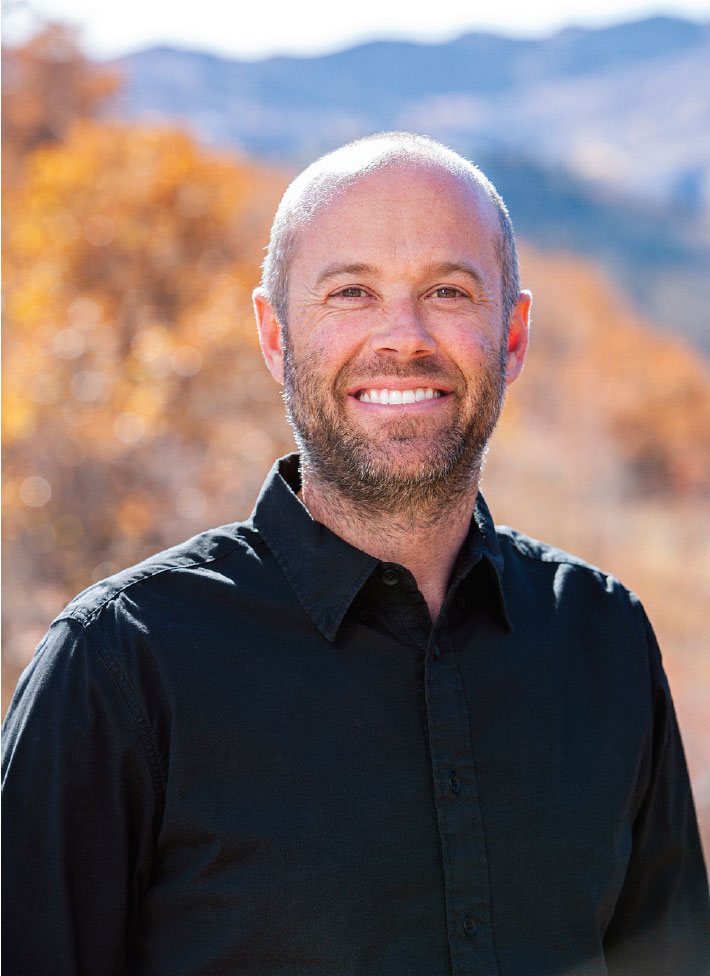
“Most of us live in Park City, or probably any ski town for that matter, for one reason—the lifestyle.”
-Marcus Wood,
Engel & Völkers
whj : What are buyers seeking in the current market?
Mark: Today’s buyers are looking for natural light, modern lines, and lots of glass throughout the home. The colors are starting to change slightly back to natural undertones and taupe shades. In terms of layout, buyers are seeking a proper office space allowing them to work from home, preferably close to the primary suite. Multi-use garages are becoming more popular, in addition to outdoor features and secondary guest suites. Crestron and Savant, who specialize in home automation experiences, are still very popular, but the experience needs to be simple and easy, from audio, video, and lighting controls. Also, radiant floor technology, energy efficiency, and wellness remain a priority.
Marcus: I always say about Park City that the neat thing about our town is that we have something for everyone. We have the golf communities, we have the ski communities, we have the condos, we have the townhomes, and we have the full-time neighborhoods. We have something for everybody that other ski towns don’t. They’re restricted to the type of product or what they offer, but in the end, people love new. They want something built, and in many cases, they’re willing to pay a little extra for that, and that’s always been the case. They will pay a handsome premium for that finished new product, and that’s because it’s still hard to find that new product in town.
Ryan: Instant gratification. Bring your toothbrush and luggage, that’s it. You don’t have to call one of us to figure out who should do the remodel and how long it will take, and all the headaches that you know are possible that somebody would have undertaken from afar.
Marcus: To walk in and see exactly what you’re going to get and that it’s all there for you to speak to the buyers. They’re happy to pay for the convenience of it being done.
Ben: The sheer volume of people coming in and wanting something immediately who had never even been to Park City was hectic. People were flying in and buying directly without knowing anything about the area because they wanted something right on the spot. The pace and the volume were intense. It’s a good thing, in certain aspects, that it slowed.
Marcus: It has changed the dynamic of the town significantly. People from across the country made a move and made it very quickly. They had to get out of San Francisco immediately and buy a home as soon as possible before somebody else did. There were long ski lift lines and no restaurant reservations during the shoulder season in the middle of the week. Locals had to readjust to that lifestyle. Most of us live in Park City, or probably any ski town for that matter, for one reason—the lifestyle.
Mark: Part of the Park City charm is that we live in a small ski town and a resort. We have the best school systems in the state, including the Winter School, which is a charter school operating through the summer so student-athletes can train and compete in the winter. Summers are just as desirable as winters, especially with sunsets after 9pm. Also, we have a network of trails that totals 500 miles for bikers and hikers of all levels. Add on convenience, access to big-city amenities, and an international airport, and you quickly realize why Park City is such a great place to call home.
whj : How are sellers approaching sales?
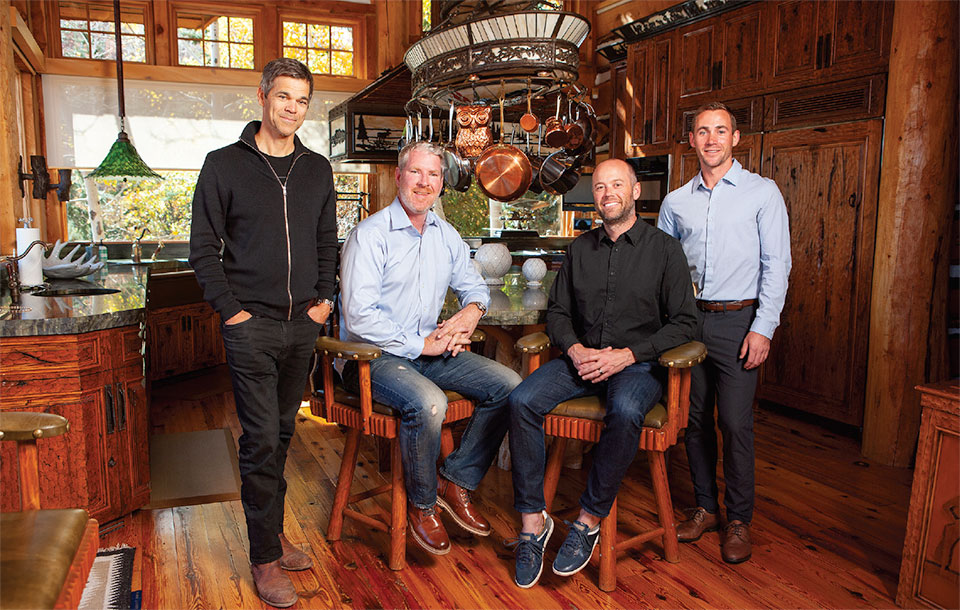
Mark: To a certain extent, it depends on the property’s location. Sellers today, who are looking to list their ski homes for the winter, are anticipating the market to stay strong given the lack of inventory. There are very few options in the neighborhoods for single-family homes and condominiums, especially in Deer Valley, so that the market could stay strong through most of the season. Luxury buyers are more likely to pay cash as many global investors have increased their net worth over the past few years. As such, these sellers are savvy and understand there is a lack of inventory. Buyers in prime ski locations, where inventory is lacking, will need to pay close to the asking price to purchase certain ski properties.
Marcus: Currently, our inventory is less than half of what it was pre-pandemic. We thought we would see an inventory increase, but it has yet to happen. I think people are stuck because of interest rates, and it doesn’t seem like a smart move to go from one property to the next and pay double or triple the interest rate. People have a great deal of equity in their homes, and I still think there’s a fear of COVID out there, and people want to hold on to their mountain haven in case something happens. It is a safe place to keep your money in Park City. I also think people are using their properties more than ever as opposed to twice a year as they did in the past.
Ryan: There are requests from clients looking for seasonal rentals, and they’re not out there because the people who have purchased have taken them out of the rental market so they can come and go as they please. Management companies have difficulty filling three-bedroom, four-bedroom, and specific niches of different condo complexes. There is also a strange dynamic of buyers looking six months ahead and sellers looking six to twelve months back. As a seller, if you’re getting out of a 3% mortgage to move into a 6% mortgage, you might stay firm on your price.
Marcus: We live in a town where buyers don’t need to buy, and sellers don’t need to sell, and always trying to put that together is a big challenge, especially in these dynamics.
Ben: It seems like we’re right in the middle of the leveling off, and it’s ongoing right now. Sellers are looking at comps from six months ago, and buyers are looking at market dynamics that are changing by the week. It’s tough to get those two together. We have a great deal of property sitting on the market with past pricing, and buyers either make a run at them unsuccessfully because the sellers are not willing to come down or you’re just waiting, which is a significant segment of the market. They are waiting for those prices to come down off peak numbers for them to be absorbed. It’s a bit of a waiting game, and it’s throughout the market.
whj : What is the range of sales from the past year and coming?
Marcus: Our team made the most expensive residential sale ever this year, a 39.6-million-dollar home with 17,500 square feet and direct ski access. It was the most significant residential sale in the state of Utah ever. It is an intriguing and fantastic home. However, every neighborhood in Park City had record sales.
Mark: The price per square foot across town has risen over the years, and it seems today a teardown can start around $1,000 per square foot. Old Town, where you will find smaller modern homes in a historical setting, new construction, or recent remodels, are listing for around $1,500 per square foot. Condos are a little less, as there are few new opportunities in that area. Moving up into the mountains, newly constructed custom ski homes start around $1,500 per square foot and go higher depending on amenities in the home and the level of finishes. I will be bringing to market a legacy property at Montage Deer Valley for $3,100 square feet.
Ryan: In Old Town, I just closed a $4,600 per square foot home, a home in Victory Ranch at $1,200 per square feet, and in Promontory, at $970 per square feet. These are strong sales in each of those submarkets.
whj : Is the landscape of Park City and the surrounding area changing for design and architecture?
Mark: Contemporary design continues to drive architectural decisions. Clients want a unique and modern design that will stand the test of time. Owners are savoring their connection with the outdoors and using lots of windows to bring the outdoors in. They are also looking for entertainment for their families and moving designs to include outdoor heated living spaces. Using natural materials to tie the homes to their environments continues to be strong. Designs are embracing the richness of natural stones, woods, and metals, as well as the use of native plantings to blend in with the surrounding landscape.
Marcus: It’s been very consistent in the last few years. It is all about the natural elements of steel and concrete. However, glass is the most significant change. It is all about floor-to-ceiling glass everywhere to bring the outside in.
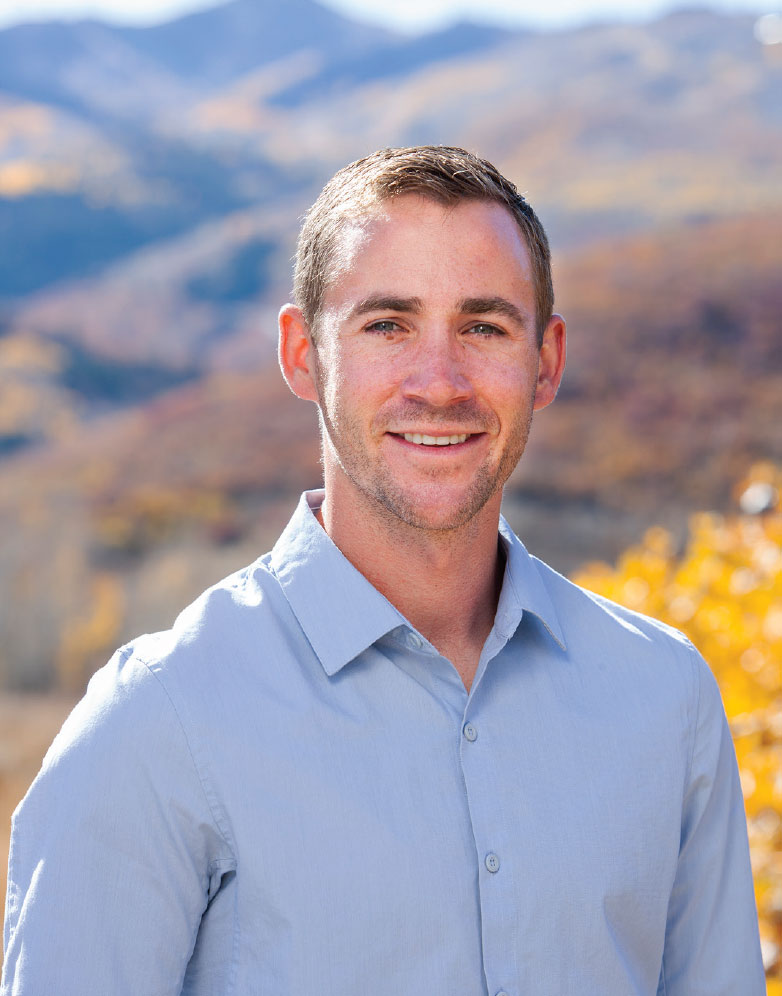
“Certain segments of the markets will struggle, and certain areas will do fine because there are still plenty of cash buyers willing to pull the trigger for the right property when it hits the market.”
-Ben Fisher, The Fisher Group at Summit Sotheby’s International Realty
Ryan: Since we do quite a bit in the spec market, we are always following trends, what is current, what buyers are looking for here and now, and implementing that into houses. Our feeder markets are where the trends originate from. A California influence is a coastal feel instead of white and gray all the time. It’s not a second home anymore. It’s very much a three- to six-month place to use. The buyers want what they have at their primary residence now in their second homes. Offices are now a staple. It’s not just in the corner of the house by the garage. It must be equitable in view and space, similar to a primary bedroom because people spend much more time in their offices.
Marcus: Most owners don’t want overly complicated houses. Technology can be simple, and they mainly prefer to keep things simple yet high-end.
whj : What are some more trends for building, remodeling, and mountain living?
Ryan: One segment that will be interesting to watch is the type of wellness resorts that are being created, which will be the first of its kind in Park City. I think they will do quite well because people spend a great deal of money going to Aman Resorts. They’re going further away with no phones or Wi-Fi to have a wellness retreat.
Marcus: People love wellness. A significant portion of our record sale was that it was a wellness home with recirculating air and a powerful filtration system through an HVAC and water system, along with adjustable lighting that mimics the movement of the day and helps your body adjust to sleeping patterns. It was a significant portion of what sold the home, and the timing was perfect with COVID and the focus on health and wellness. I think this will be a big trend moving forward.
Mark: Homes that create the best environment for productivity and relaxation continue to be a priority. Interiors are increasingly becoming less about what’s trendy and more about personal expression. Rather than specific trends declining, it’s about different styles coming together. Homes have become a place where owners choose interiors seeking comfort, feeling a sense of calm, and adding more vibrant colors. The warmer grays are arriving, and we see less of the strictly cool tones. Materials like oxidized metals, natural stones, and wood are what designers are using in most of their projects today.
Ben: Amenities like home offices, home gyms, and clean open living with lots of windows are all highly desirable features for any buyer coming into the area. We’re also seeing a significant amount of older property being torn down and rebuilt or upgrades happening to make them brand-new again. With almost no land available in town to build on, the owners opt to turn what they already have into something new and sexy.
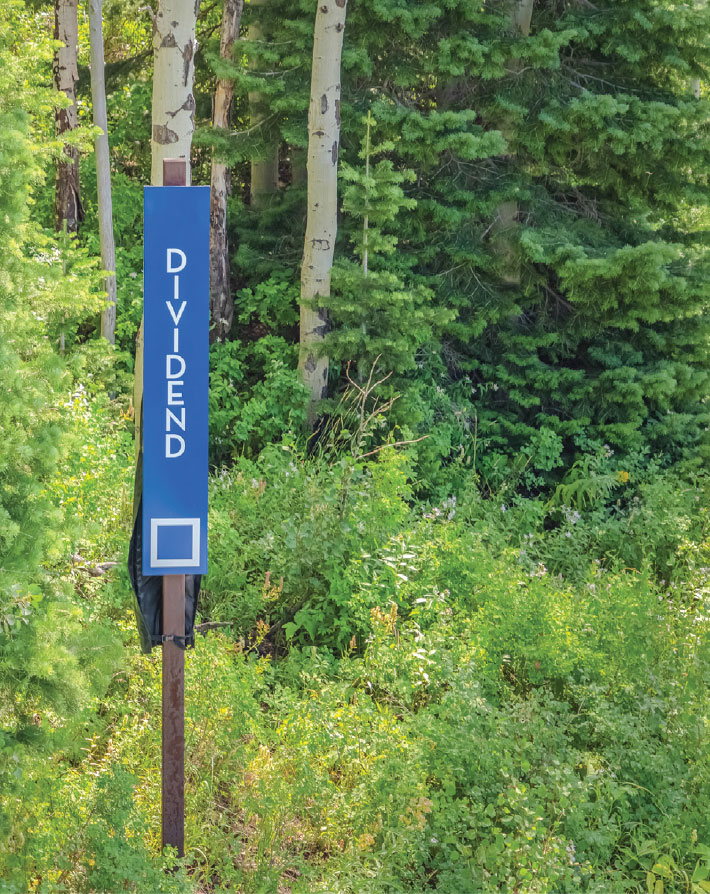
whj : What makes Park City one of the most desirable places to live or own property?
Mark: Park City is a four-season small resort town with several opportunities to enhance an active, outdoor lifestyle. You will find several options for ski terrain from Deer Valley to Park City, snowboarding, boating at multiple lakes, ample golf options, and insane mountain biking. To many, summer is a favorite time of the year when you can find live music several nights a week and festivals on many weekends. In addition to the outdoor lifestyle, Salt Lake City has all of the big-city conveniences, such as museums, shopping, and concerts, only 30 minutes away.
Ben: I think accessibility and the volume of options we have for all sorts of buyers looking to get into town is a huge draw. You can go for the ski community or primary residence or be in a family neighborhood in a variety of areas around town. We have many options throughout the surrounding areas. Other ski towns don’t have that volume of inventory to choose from, and it’s always bringing people in. I don’t think it will slow down much on that front, as new buyers are looking to come to the area. The value buyers seem to have started to make phone calls again, looking for deals, and that’s one of the things I’ve been combating lately. We’re not going to see what we saw previously or whatever other areas may see. Those buyers waiting for the market to drop 25% before pulling the trigger will always be chasing the market and never buying. You’re not going to see this type of real estate desperation out of Park City real estate.
Ryan: I’ve never left Park City and come back begrudgingly. Whenever I have left town, I have always been excited to come back home. I don’t have to worry about an hour’s worth of morning traffic to work. We have fresh mountain air, great food, and wonderful people. It’s a fantastic place to be. I still find myself discovering. Twenty years later, I’m still finding new trails, loops, ski runs, coffee shops, and new friends with similar interests. It makes it a special place to be.
Marcus: On a macro level, being in the state of Utah, one of the fiscally best-run states in America, pro-growth, pro-business, affordable taxation, and affordable property tax and real estate property tax are the things that make it very attractive for many people to live here, make a good living, and have a great lifestyle in the state of Utah. On the micro level, specifically in Park City, it is a lifestyle you cannot beat. The happiest people on earth live in nature, by the ocean, or something along those lines. I think it’s grounding for many people to fulfill, be part of, and live in a sustainable community with so much going for it. Between the shops, restaurants, trails, and a healthy way of life, there is not a single day when people here don’t think about recreating in some fashion. All the people here are here for one reason, they all are like-minded from that perspective.
A Special thanks to Marcus Wood for coordinating the location for WHJ’s fall round table discussion. Talks took place in this beautiful home currently listed in Park city.
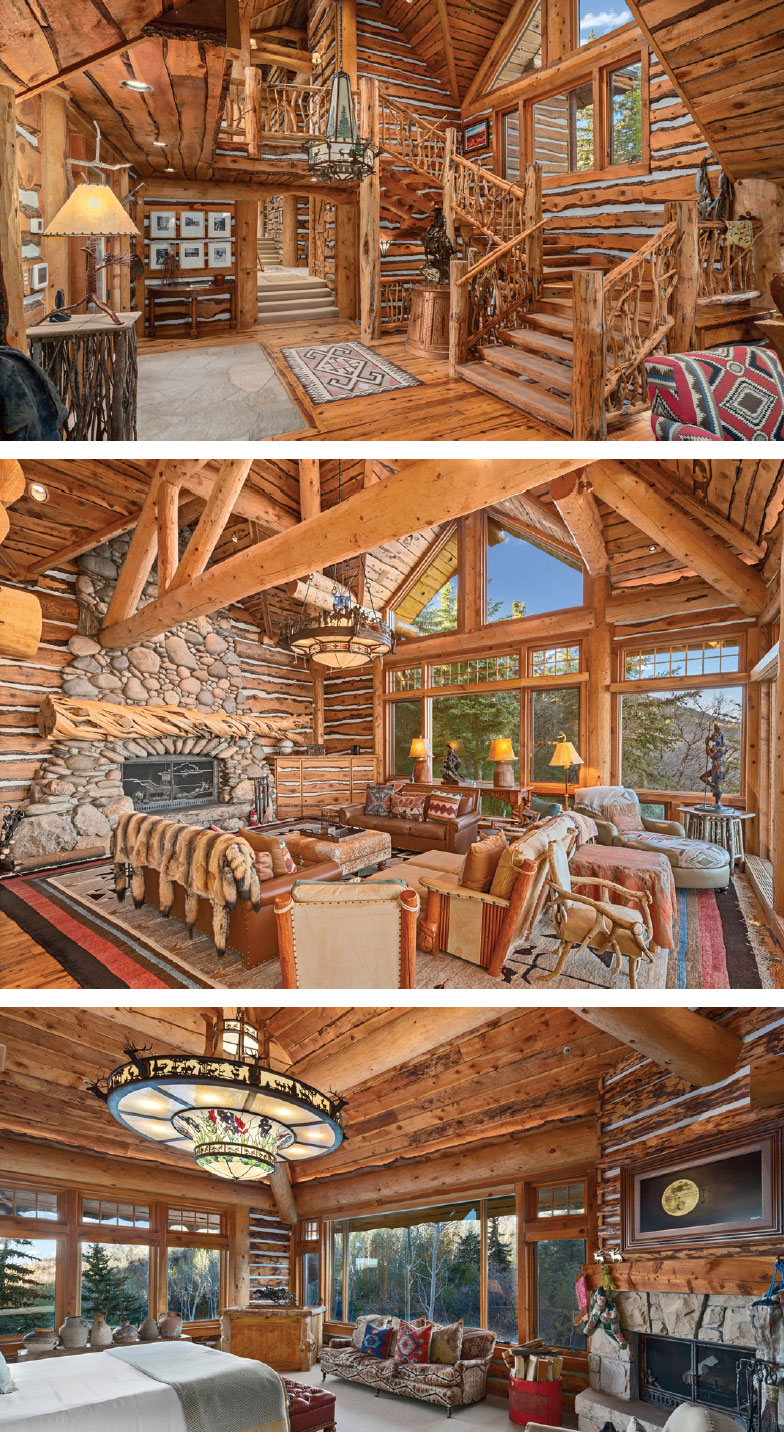
3853 Rising Star Lane | Park City, Utah
Designed by renowned architect Fred Babcock, this 12,063-square-foot home with six bedrooms and eight and a half bathrooms stands on over 16 acres surrounded by awe-inspiring water and mountain views, wide-open spaces, and crisp mountain air. This elegant home is the pinnacle of private mountain living, yet it is only ten minutes from skiing at the Deer Valley and Park City Mountain Resorts and Historic Main Street for exclusive shopping and fine dining.
Built for entertaining, the home features a gourmet kitchen, multiple entertaining areas, an executive office, a wine cellar, and six luxurious suites, including a bunk room, wood- and gas-burning fireplaces, and multi-level outdoor living spaces. Create memories with family and friends to last a lifetime at this mountain retreat. Hike, bike, ski, and snowshoe from the property and end the day in your indoor hot tub, sauna, or outdoor swim hot tub. Every detail is unique and hand-crafted, featuring renowned works of art, including carved log details, one-of-a-kind lighting fixtures, sculptures, and custom-carved cabinetry, much of it created by acclaimed western artist Peter Fillerup.
Adjacent to hundreds of acres of undeveloped open space, you can watch moose, elk, deer, and other wildlife meander while overlooking thousands of acres of the Uinta Mountains. The property has also been approved for a 3,000-square-foot paddock and barn for horses or livestock. The house is only 40 minutes from Salt Lake International Airport, and the price includes extensive unique and high-value furnishings and art.
For more information, contact Engel & Völkers in Park City at 435.850.7000. | 890 Main Street Suite 5-101 | Park City, Utah | parkcity.evrealestate.com
